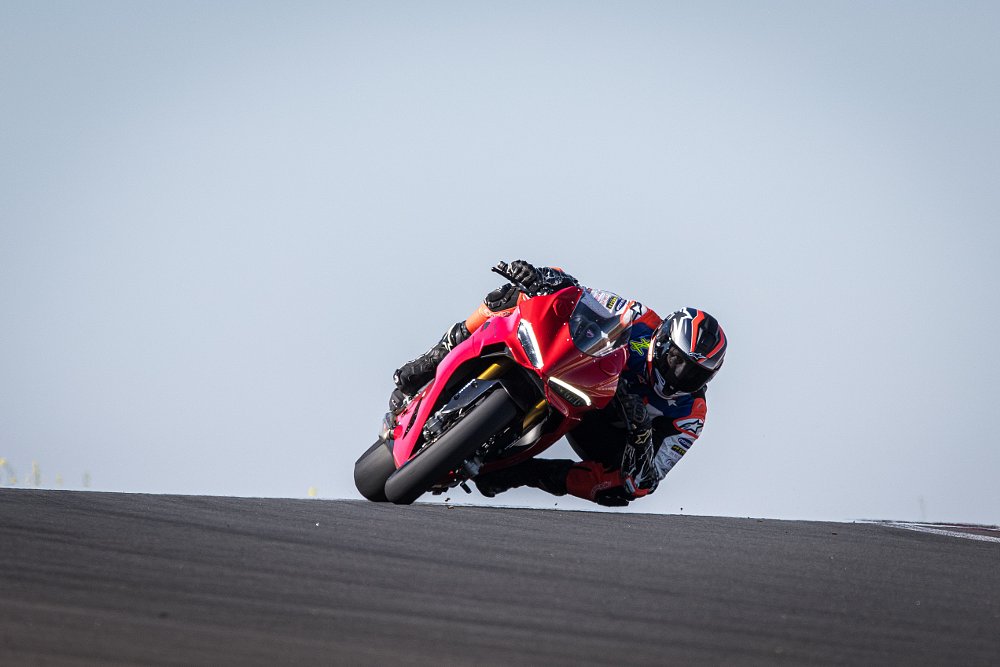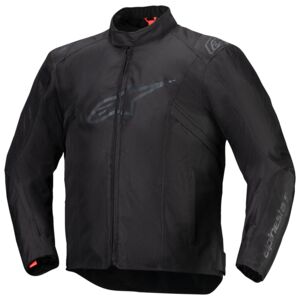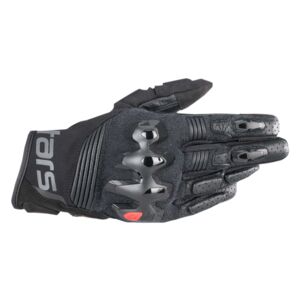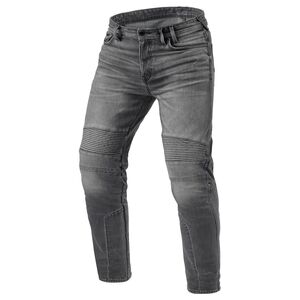Nostalgia casts one hell of a spell. It recalls only the best of memories. It makes you long for what was, not for what is. That’s the hex I was under when it came to the Streetfighter V2.
The previous incarnation of Ducati’s naked bike holds a special place in my heart. It’s easy to see why. The 955 cc Superquadro V-twin made enough horsepower to tickle your adrenals but not enough to drain them. Neither a liter bike nor a true middleweight, it occupied a unique position within the naked bike landscape — one that threatened Ducati’s own Streetfighter V4.
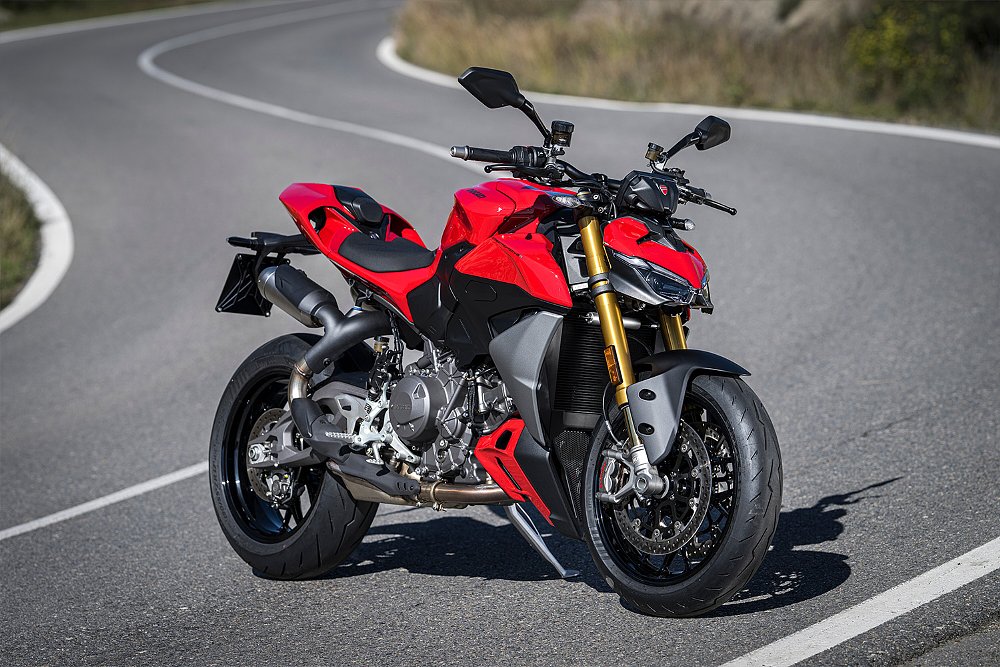
The Italian marque wasn’t reluctant to acknowledge that fact at the 2025 Streetfighter V2’s global press launch in Almería, Spain.
“The two bikes were really, really close,” admitted Ducati Head of Product Communications Giulio Fabbri. “Most of the clients were the same.”
The objective: to widen the gulf between the V2 and V4. The method: introduce an all-new platform. Cue Ducati’s 890 cc V2 engine.
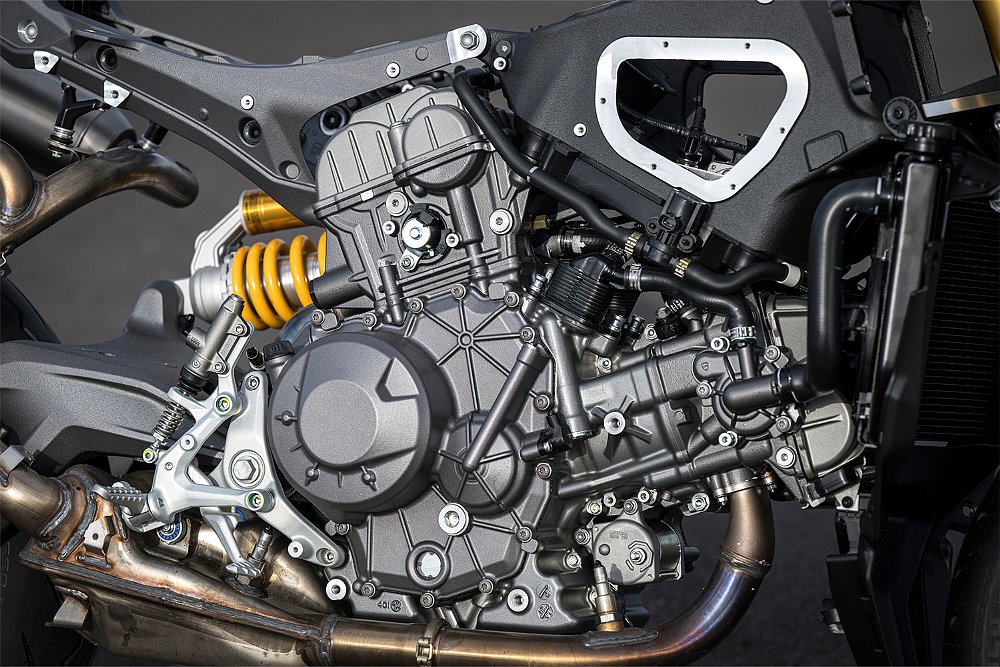
V2 take two
Although the new V2 foregoes a fancy moniker like the Superquadro it replaces, it still boasts its share of Ducati-isms. The 90-degree cylinder layout is one of them. The over-square bore/stroke ratio (96 mm x 61.6 mm) is another. It’s also lightweight and compact, tipping Ducati’s scales at just 120 pounds. In fact, it’s the lightest twin-cylinder engine to roll out of the Bologna factory, and a full 21 pounds lighter than the outgoing Superquadro.
The new twin on the block doesn’t cling to brand conventions, though. Out is Ducati’s desmodromic valvetrain. In are more common valve springs. Ducatisti worshipping at the altar of horsepower may denounce the move, but 9,000-mile service intervals and 18,000-mile valve checks present grounds for debate. It’s a strong counterargument when considering the Superquadro V2 required maintenance every 7,500 miles and desmo services every 15,000.
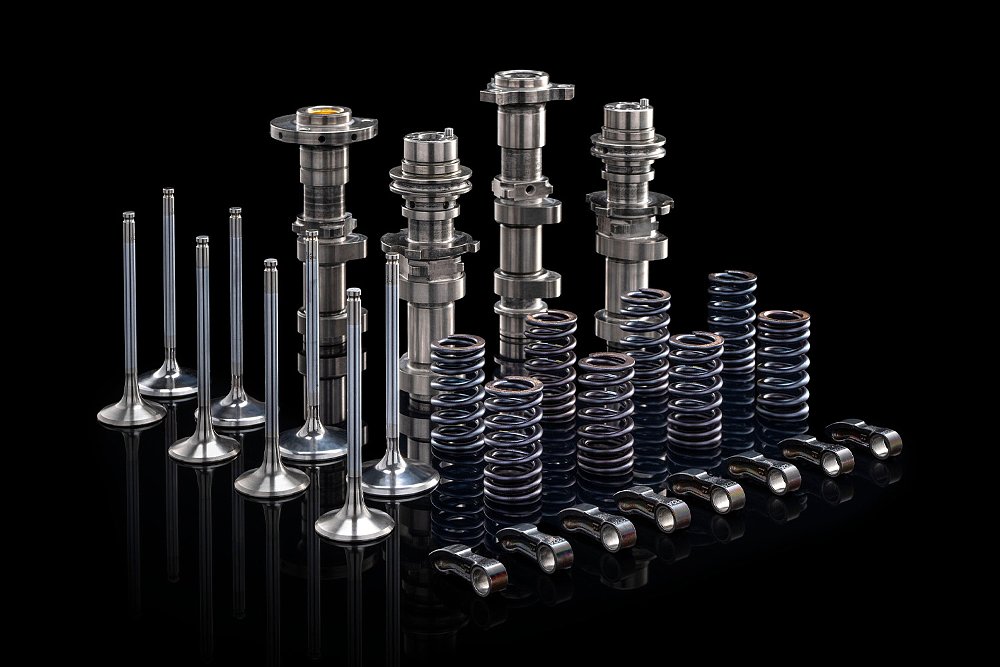
That doesn’t mean the design brief called for practicality at the expense of performance. Au contraire. Ducati wanted both. That’s why it employed Intake Variable Timing (IVT). With two cam phasers fitted to the intake camshaft, the system alters intake valve timing (across a 52-degree range) to deliver “torque at low rpm” as well as “maximum power at high rpm.” Quantified on a spec chart, that translates to 120 horsepower (at 10,750 rpm) and 69 foot-pounds (at 8,250 rpm). Those figures and claims sound all good and well in a brochure, but it’s how they transfer over to the road that matters.
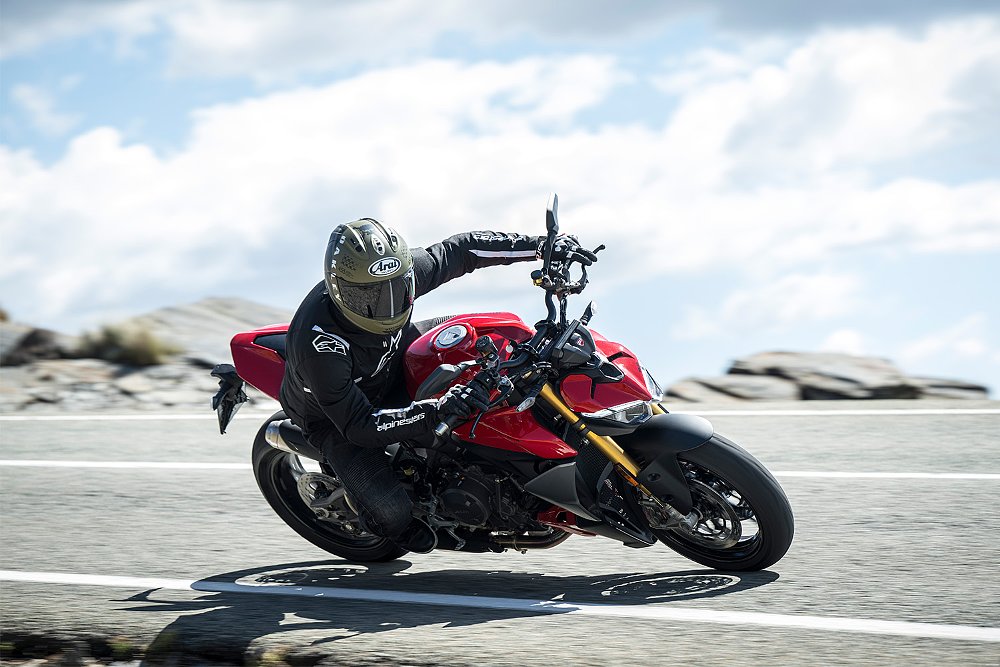
After unveiling the new V2, Ducati wasted little time incorporating the two-cylinder mill into its lineup. Zack recently shared his thoughts on the version within the Panigale V2 S. My feedback for the iteration powering the Multistrada V2 S was a bit more mixed. The primary complaint being its sluggish throttle response under 4,000 rpm. I was relieved to find the Streetfighter V2 S didn’t suffer the same issue. Well, at least not to the same extent.
The V2 still doesn’t thrive in low-rpm situations. Neglecting a downshift into a corner or through a roundabout still isn’t advised, but in Streetfighter form, the engine navigates the depths of the rev range with much more poise. It's difficult to determine whether the engine owes that to its shorter final drive ratio (15/42 versus the Multistrada V2 S’s 15/40) or its state of tune — or both. The results, however, are easy to see.
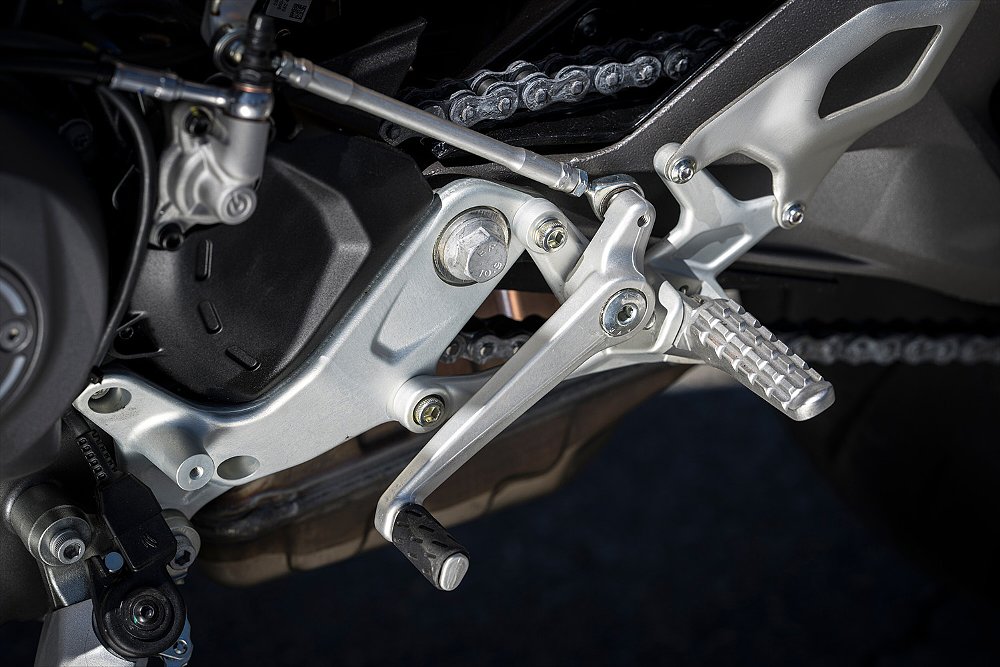
Between 4,000 rpm and 11,000 rpm, the twin reportedly produces 80% of its torque and steadily climbs to its 120-horsepower peak. The Road, Sport, and Race ride modes all maintain that maximum output (limited to 95 horsepower in Wet mode). The only difference between the three modes is throttle sensitivity, with Sport and Race offering the most direct response.
Albeit twisty, the endless S-curves winding into the hills outside Almería don’t resemble a race track. The lanes — and therefore, the margin for error — are far too narrow. Yet, I remained in Race mode the majority of the day. That’s because the power on tap hardly posed a threat at corner exit. Aside from a surge in the midrange, the delivery was smooth and linear. It’s engaging but never frightening. Part of the reason the power profile isn't overwhelming is because it's commensurate to the V2's capable chassis.
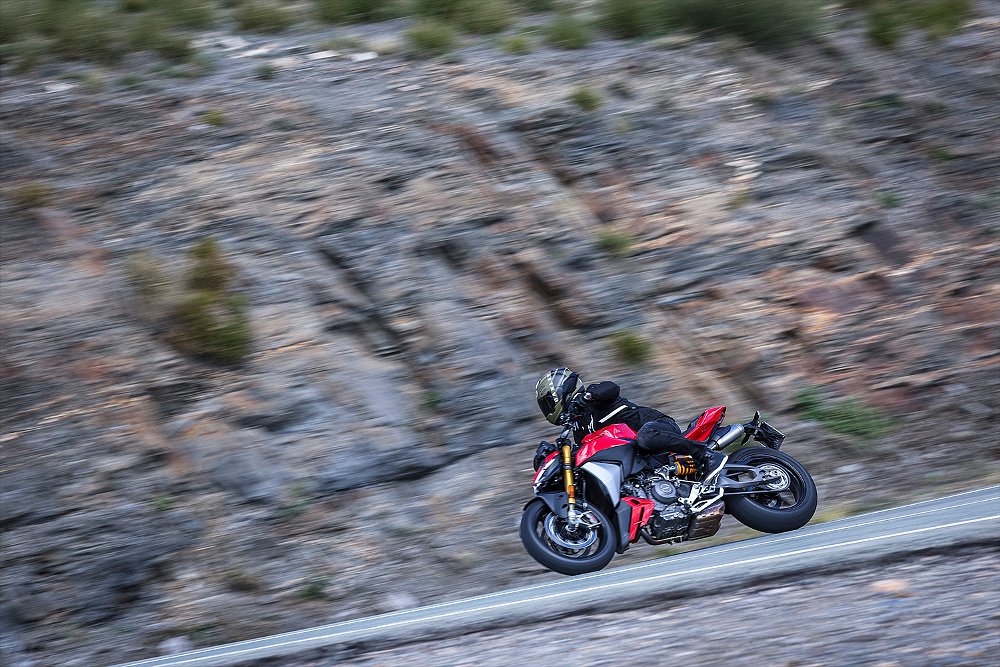
Lighten up
Throughout the pre-ride presentation, Ducati reps hailed the Streetfighter’s supreme “lightness.” It was mentioned no less than five times. There’s a good reason for that over-emphasis. The Streetfighter V2 is 39 pounds lighter in 2025. The model owes much of its lean form to a boxy monocoque front frame, which bridges the engine and the 43 mm Öhlins NIX30 fork. A monoshock, also supplied by Öhlins, connects the new dual-sided swingarm to the V-twin’s rear.
It’s these weight-conscious provisions that help the model sneak under 390 pounds. With no fuel in its four-gallon tank, the Streetfighter V2 S tips Ducati’s scales at 386 pounds. That lightweight build is on full display when the going gets curvy.
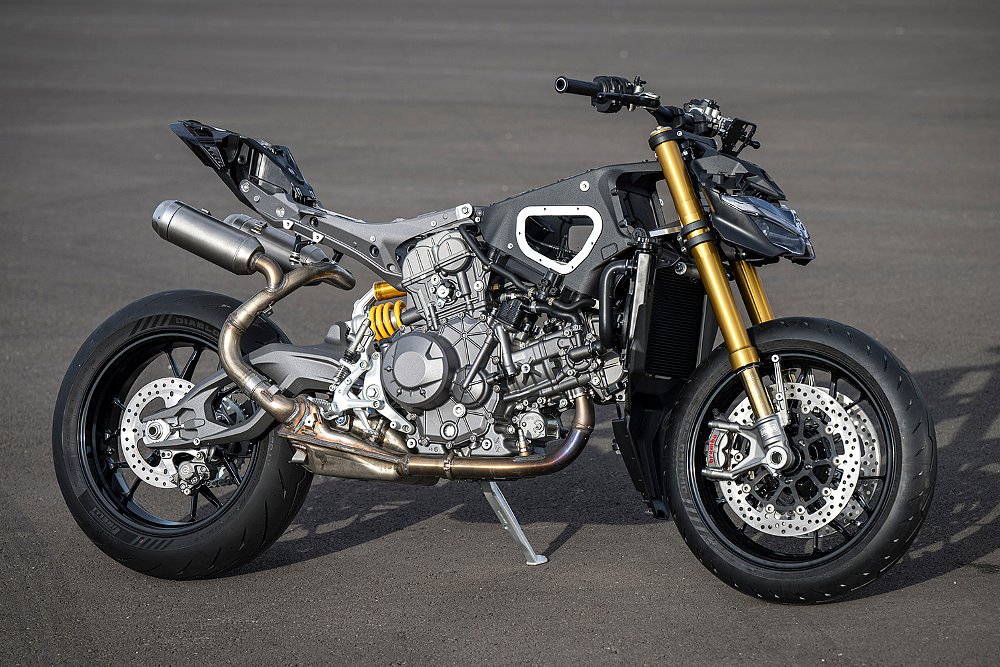
Steering the Streetfighter comes about as naturally as humming your favorite tune. One could attribute that quality to its curb weight, but its wide handlebar (now 0.6 inches wider on each side) also plays a role. Be it a chicane or switchbacks, tossing the Streetfighter from side to side required little muscle. Ducati matched that effortlessness with precision. Diablo Rosso IV tires tracked true. Monobloc M50 binders eased mid-corner adjustments. No apex was safe.
The Streetfighter’s sporty nature also extends to its ergonomics. Ducati may mount the footpegs lower than those found on the Panigale V2, but the seat-to-footpeg distance isn’t much longer. My knee bend was decidedly acute, but legroom didn’t become bothersome until the mid-afternoon. By then, several members of my group rode through town with their legs outstretched, finding temporary relief while speeds were low. It’s a small nit to pick, especially when the current Streetfighter V2 arrives as a much more practical machine.
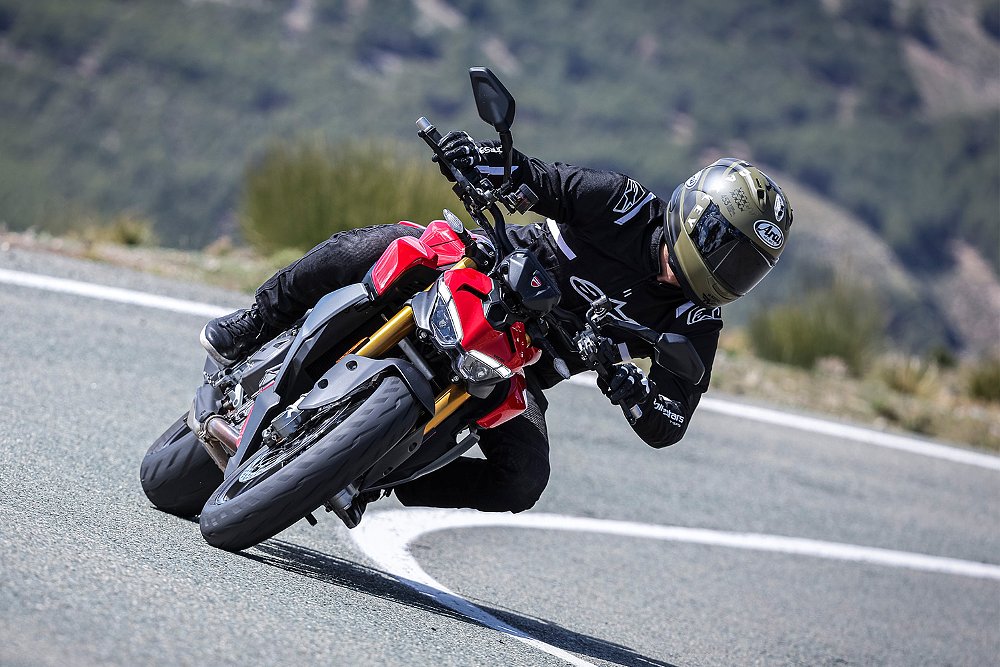
Practical magic
The thing about nostalgia is that it only brings to mind the “better times.” It only reminded me of the Superquadro’s blinding speed. It only recalled the Streetfighter’s stonking brakes. Thanks to nostalgia, I only saw the bike’s strengths. I ignored all its weaknesses.
I conveniently forgot that the bike guzzled gas the way a thirsty dog drinks water. I neglected the rear header, the one that routed under the seat and all too often burned my buns. I failed to mention the clunky user interface. While I can’t speak to the new model’s fuel consumption after a single 122-mile ride, this ‘Fighter addresses many of its previous shortcomings.
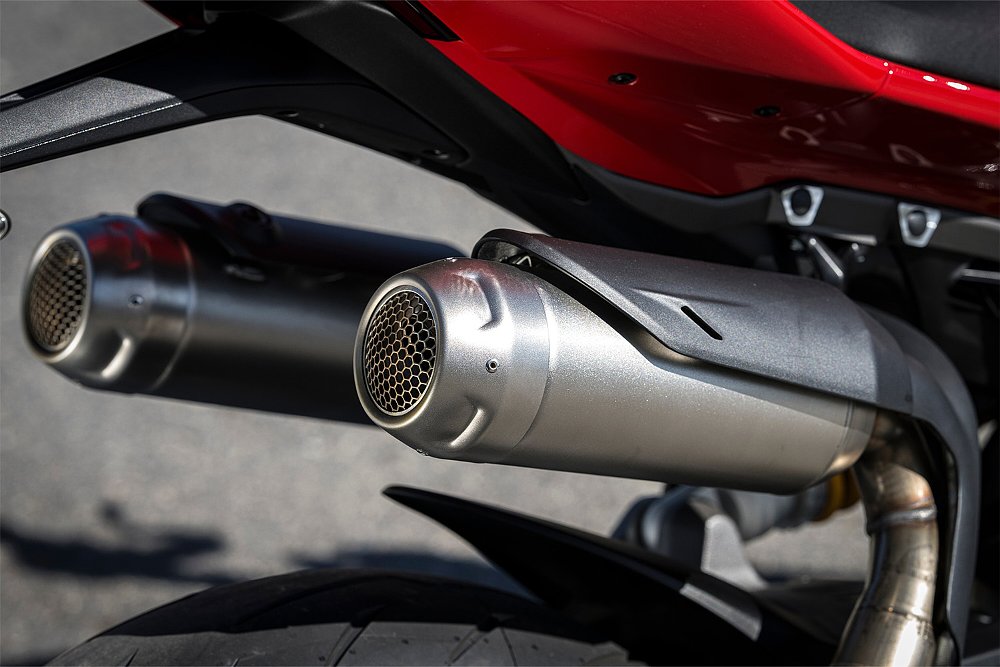
That’s a major feat, because the new V-twin doesn’t produce any less heat. At one point, the dash reported an internal engine temperature of 212 degrees (F). Still, I felt no hot air wafting onto my unmentionables. That could be credited to several factors. A.) Ducati installed heat shields between the subframe and exhaust cans. B.) The catalytic converter is located under the swingarm, tucked away from the rider. C.) Our group encountered no traffic, and the daytime high was 69 degrees. But in the end, I think the answer is D.) All of the above.
Technology was never lost on the Streetfighter V2. The outgoing model offered ride modes and power modes. It had traction control, wheelie control, and engine brake control. What was lacking was the user experience. That’s what happens when you cram so much information into a 4.3-inch display. It's also the result of poor UI controls.
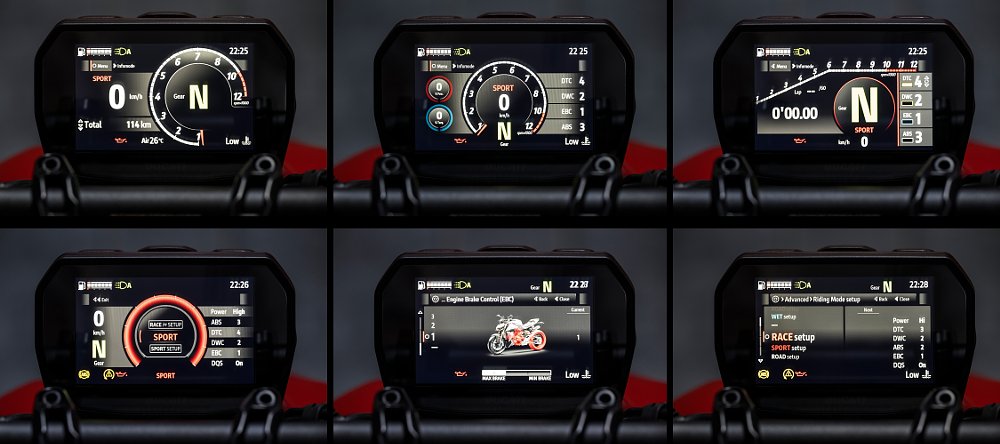
Ducati makes no such mistakes this time around. Exploring the various submenus with the new four-way control pad is hassle-free is hassle-free. A five-inch TFT dash now displays ride data in three different layouts. It’s a clear step forward, but are the Streetfighter’s practical upgrades enough to offset its performance concessions? That question still looms large for many customers.
Stepping back to move forward
When I tested the previous-gen Streetfighter V2, I deemed it a member of the Panigalus Impracticalus genus. I can no longer classify the model as such. It used to produce more horsepower, but it also produced more heat. It was heavier on the scale and heavier on the wallet. By taking a step back, the 2025 Streetfighter V2 doesn’t just take a step away from the Streetfighter V4, it takes the first step on its own path.
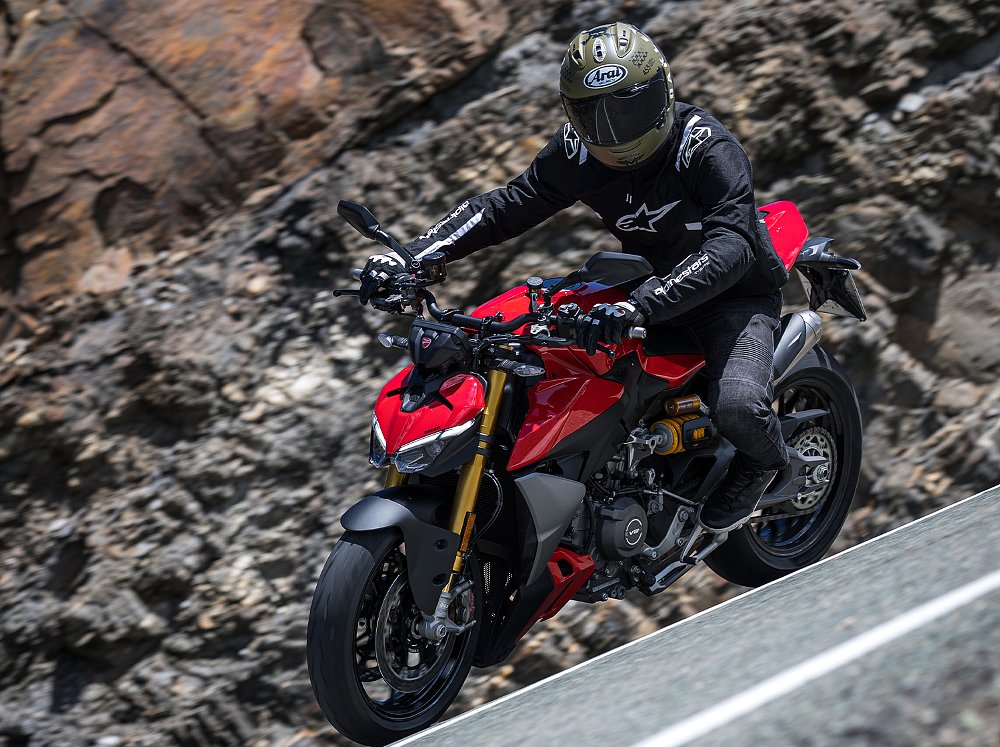
Now, it’s less powerful but its more accessible. Not only is it lighter, it’s more affordable. Starting at $14,995, the base model Streetfighter V2 costs $3,200 less than its predecessor. Even the $17,995 S trim comes in under the old $18,195 MSRP. Ducati hopes the new pricing model and user-friendly revisions draw newer, younger riders to the V2 ranks.
That’s a demographic that should have little nostalgia for the Superquadro days. In the end, those years weren’t as golden as I originally remembered. My recollections were just rose-colored. Riding the new Streetfighter V2 only proved as much.
| 2025 Ducati Streetfighter V2 S | |
|---|---|
| Price (MSRP) | $17,995 ($14,995 for non-S) |
| Engine | 890 cc, liquid-cooled, eight-valve, 90-degree V-twin |
|
Transmission, final drive |
Six-speed, chain |
| Claimed horsepower | 120 @ 10,750 rpm |
| Claimed torque | 69 foot-pounds @ 8,250 rpm |
| Frame | Aluminum monocoque |
| Front suspension | Öhlins 43 mm NIX30 fork, adjustable for spring preload, rebound and compression damping; 4.7 inches of travel |
| Rear suspension | Öhlins STX46 shock, adjustable for spring preload, rebound and compression damping; 6.3 inches of travel |
| Front brake | Brembo M50 four-piston calipers, 320 mm discs with ABS |
| Rear brake | Brembo two-piston caliper, 245 mm disc with ABS |
| Rake, trail | 24.1 degrees, 4.0 inches |
| Wheelbase | 58.8 inches |
| Seat height | 33.0 inches |
| Fuel capacity | 4.0 gallons |
| Tires | Pirelli Diablo Rosso IV, 120/70R17 front, 190/55R17 rear |
| Claimed weight | 386 pounds (no fuel) |
| Available | April 2025 |
| Warranty | 24 months |
| More info | ducati.com |











